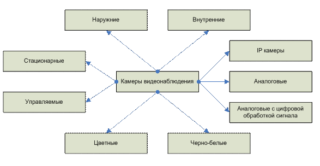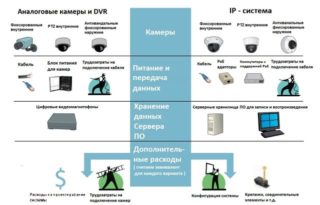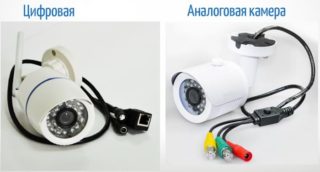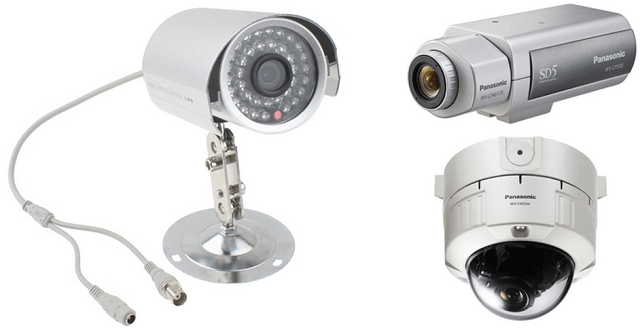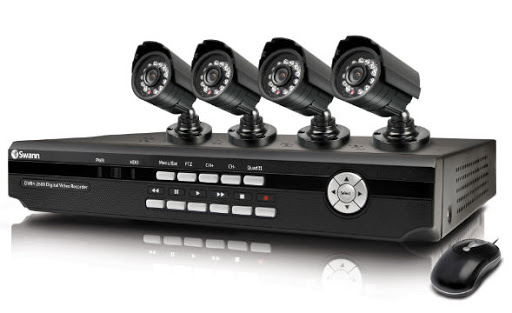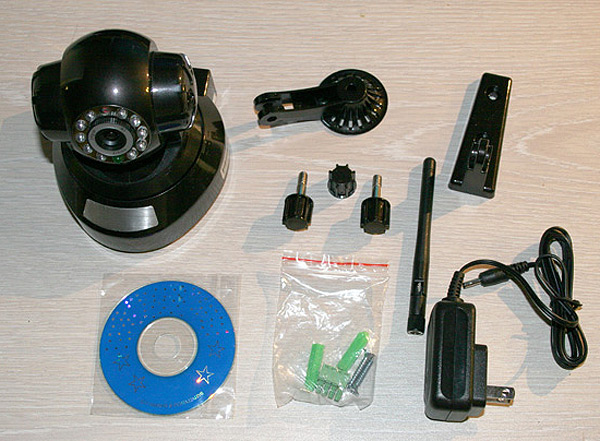Surveillance equipment is a mandatory component of security systems installed in closed areas. With its help, the possibilities for the protection of objects are expanded, the likelihood of penetration by outsiders is noticeably reduced. To understand the advantages of such systems, you will need to study the video camera device and the principle of operation, as well as familiarize yourself with the existing varieties of these devices.
System design and the principle of operation of cameras
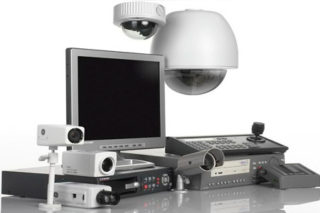
A typical video surveillance device includes the following elements:
- set of video cameras;
- connecting cables;
- video recorder;
- display for image output (monitor).
Understanding how surveillance cameras are arranged will help to know the principle of operation of security systems and the procedure for combining their elements into a single complex.
The principle of operation of the video camera is to read information about the captured image and transmit it via cable to the DVR. The latter processes the original data to the desired form and displays them on the monitor. In addition, it writes information to the built-in memory or to external media.
Camera classification
- analog;
- digital or network IP devices;
- HD-SDI optics that combine the capabilities of the first two options.
Analog samples of video cameras are outdated models, but a complete rejection of their use is considered premature. Their capabilities are inferior to digital models, but when working in the AHD, HD-TVI, HD-CVI standards, they can be used to obtain a picture with high image quality.
Networked IP devices are equipped with sensing elements that digitize the picture and send it directly to the Web server. The capabilities of digital systems eliminate the need to lay a separate cable to the recorder. They allow monitoring from anywhere with direct Internet access. Hybrid HD-SDI samples work with the same digital image, but are not designed for digital processing. The signal received from them is encoded at the place of formation and then transmitted to the server via a fiber-optic line.
Camera selection criteria
- method of image transmission and processing;
- main purpose;
- design features.
Analog samples are suitable for users who are not ready to spend significant amounts on organizing outdoor surveillance. Modern digital and hybrid HD-SDI models are purchased for organizing a multifunctional security network.
Advantages and disadvantages
- simplicity of system configuration;
- the ability to connect to existing broadcast networks;
- low cost of components required for operation;
- high quality of signal transmission, regardless of the state of the network and the length of the line;
- admissibility of combination with samples from different manufacturers.
To form and transmit an analog image, it is enough to correctly connect the wires that differ in the color of the insulation. Adjustment of the camera itself, including its focusing, is carried out manually or in automatic mode.
The disadvantages of these devices include:
- the need to install a decoder for digital processing of image signals;
- limited range and lack of automatic focus lock function;
- the need for an analog recorder that allows broadcasting over the Internet.
Such cameras have limitations on the number of signals processed simultaneously (no more than 32). To increase it, you need an additional recorder. The disadvantages of analog products include their poor immunity to RF and radio frequency interference.
The advantages of digital or IP cameras are manifested in the following features:
- the presence of a wireless connection with the server, which allows them to be embedded in smart home systems;
- the ability to shoot and record by frame (ROI), saving space on memory disks;
- high level of resolution (more than 12 megapixels).
Digital IP cameras with advanced functionality are able to work not only in the surveillance mode; they are also used to analyze the captured image.
The only drawback of these devices is their high cost.
Everything you need for installation
- video cable;
- commutation connectors;
- power supply unit and consumables (fasteners, etc.).
For analog devices and HD cameras, RG or KBK cables are suitable. Experts prefer the second model, which includes two lines at once: signal and power. The maximum length of this type of patch cable reaches 500-600 meters.
A standard UTR computer cable is required to connect the IP equipment. Its permissible length is no more than 90 meters. The function of the switching connectors is performed by special products of the BNC brand, which differ for the power and signal parts. The power supply provides the system with a constant voltage of 12 Volts, and consumables include fasteners, as well as insulating tape, junction boxes, various ties, etc. Their type and number is determined at the place of installation.

